EUROPEAN
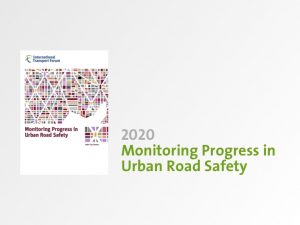
Monitoring Progress in Urban Road Safety (2020)
This ITF/OECD-report tracks the progress in reducing the number of road traffic fatalities and serious injuries in cities since 2010. It presents traffic safety data collected in 48 cities. It compares urban with national road safety trends and provides road safety indicators for different road user groups.

IRTAD Road Safety Annual Report (2020)
The Road Safety Annual Report 2020 provides an overview of road safety performance for the 42 countries participating in ITF’s permanent working group on road safety, known as the IRTAD Group. The report describes recent road safety developments in these countries and compares their performance against the main road safety indicators.

Ethics of Connected and Automated Vehicles (2020)
This report presents the work of an independent European Commission Expert Group established to advise on specific ethical issues raised by driverless mobility for road transport. The report provides recommendations on road safety, privacy, fairness, explainability and responsibility, aiming to promote a safe and responsible transition to connected and automated vehicles.
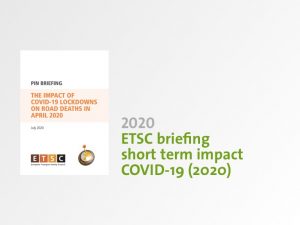
ETSC briefing short term impact COVID-19 (2020)
This PIN briefing discusses the impact of COVID-19 lockdowns on road deaths in April 2020, when most countries were in lockdown. Data were available from 25 countries and 19 saw a decrease in the number of road deaths related to the big drops in traffic volumes. Ten country examples are presented. The briefing includes recommendations at European, national and local level for ensuring a safe and sustainable path out of the crisis.
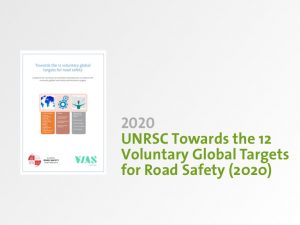
UNRSC Towards the 12 Voluntary Global Targets for Road Safety (2020)
This document, prepared by several members of the United Nations Road Safety Collaboration (UNRSC), acts as a guide to assist countries to monitor and report on the 12 Voluntary Global Road Safety Performance Targets, which was published by the WHO in 2017.

PIARC Road Safety Manual, third edition (2019)
The third edition of PIARC Road Safety Manual was published in October 2019. The manual is designed to help countries at every stage of infrastructure development to fulfil road safety objectives. The manual builds on the broad range of knowledge and experience provided in the previous editions and includes new thinking on road safety and offers a clear argument on why adopting a Safe System approach is crucial for all countries.
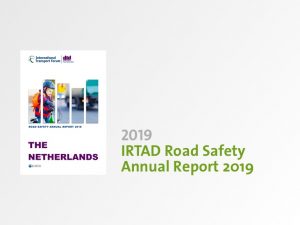
IRTAD Road Safety Annual Report 2019
The IRTAD Road Safety Annual Report 2019 provides an overview of road safety performance for 41 countries. The report outlines the most recent road safety developments there and provides comparative data for the main road safety indicators. Among many other things it also offers detailed analysis by road user, age group and types of road, and it presents the road safety strategies and targets in place.

EU Road Safety Policy Framework 2021-2030 (2019)
In June 2019, the European Commission adopted the EU Road Safety Policy Framework 2021-2030 – next steps towards ‘Vision Zero’. This Commission Staff Working Document elaborates on the EU Strategic Action Plan on Road Safety published in May 2018 , aiming to set out how the new policy is being translated into action. The policy framework is based on the Safe System approach, and presents among others a first set of key performance indicators.
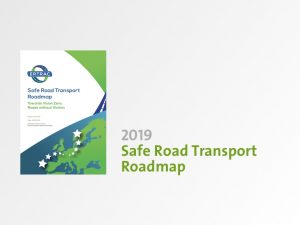
Safe Road Transport Roadmap (2019)
The ERTRAC Safe Road Transport Roadmap is entitled Towards Vision Zero: Roads without Victims. The road map covers all elements of the road transport system, all road transport modes and all phases from preventive to post-crash safety.

Connected Automated Driving Roadmap (2019)
The ERTRAC Connected Automated Driving Roadmap aims to provide a joint stakeholders view on the development of Connected Automated Driving in Europe. The roadmap starts with common definitions of automation levels and systems, and then identifies the challenges for the implementation of higher levels of automated driving functions. Development paths are provided for three different categories of vehicles.

Strategic Action Plan on Road Safety (2018)
The EU Strategic Action Plan on Road Safety is an Annex to European Commission communication, COM(2018) 293 final Europe on the move: Sustainable Mobility for Europe: safe, connected and clean. It outlines specific actions envisaged under the current Commission mandate, i.e. until end Q3 2019. The actions are set out with a specific target time frame. It cannot of course prejudge action for the next Commission but instead sets out additional envisaged actions for the post 2019 period indicatively.

Europe on the move (2018)
Europe on the Move Sustainable Mobility for Europe: Safe, Connected and Clean (COM(2018) 293 final) is the third and last “Europe on the Move” package and delivers on the new industrial policy strategy of September 2017. It is designed to complete the process of enabling Europe to reap the full benefits of the modernisation of mobility. To do so, it is essential that tomorrow’s mobility system is safe, clean and efficient for all EU citizens.
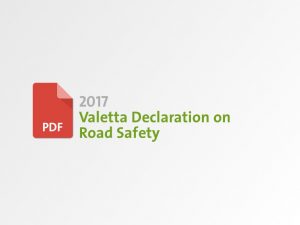
Valetta Declaration on Road Safety (2017)
The Transport Ministers of the Member States of the European Union, meeting in Valletta, Malta on 29 March 2017, agreed on what became known as the Valetta Declaration on Road Safety and endorsed by the Council of the European Union. The Transport Ministers reconfirm their commitment to improving road safety and call upon Member States and the European Commission to undertake action.
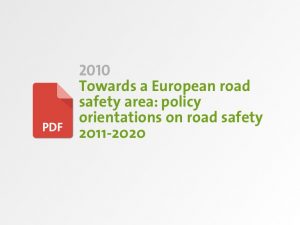
Towards a European road safety area: policy orientations on road safety 2011-2020 (2010)
This EU document aimes to provide a general governance framework and challenging objectives which should guide national or local strategies. The proposed policy orientations took fully account of the results obtained during the 3rd road safety action programme 2001-2010, showing that in spite of important progress made on road safety, efforts needed to be continued and further strengthened.
INTERNATIONAL

IRTAD Road Safety Annual Report 2018
This report provides an overview of road safety performance for 32 countries. It outlines the most recent road safety developments across IRTAD countries and comparative data for the main road safety indicators. It also offers detailed analysis by road user, age group and type of road, and describes the road safety strategies and targets in place and information on recent trends in speeding, drink-driving and other aspects of road user behaviour.

Global status report on road safety 2018 (2018)
The report highlights that the number of annual road traffic deaths has reached 1.35 million. burden is disproportionately borne by pedestrians, cyclists and motorcyclists, in particular those living in developing countries. The report suggests that the price paid for mobility is too high, especially because proven measures exist. Drastic action is needed to put these measures in place to meet any future global target that might be set and save lives.
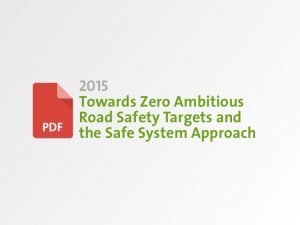
Towards Zero Ambitious Road Safety Targets and the Safe System Approach (2015)
The report reviews the state of the art in improving road safety performance and examines the role of targets in raising the level of ambition and achieving effective implementation of road safety policies. It highlights the institutional management changes required in many countries to implement effective interventions and underlines the economic case for road safety investment.

Sustainable Development Goals (2015)
The 2030 Agenda for Sustainable Development, adopted by all United Nations Member States in 2015, provides a shared blueprint for peace and prosperity for people and the planet, now and into the future. At its heart are the 17 Sustainable Development Goals (SDGs), which are an urgent call for action by all countries – developed and developing – in a global partnership. SDG3 and SDG11 both have targets related to safe (road) transport.

Implementing the Recommendations of the World Report on Road Traffic Injury Prevention (2009)
Following the WHO’s World report on road traffic injury prevention from 2004, this report provides guidelines for countries for conducting Road Safety Management Capacity Reviews and the specifications of Lead Agency reforms, investment strategies and safe system projects. As such the report provides a pragmatic approach designed to overcome institutional capacity barriers and achieve sustainable results.
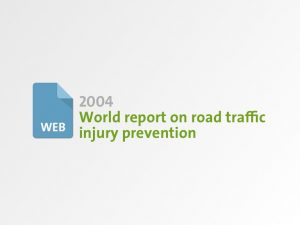
World report on road traffic injury prevention
In 2004, worldwide, an estimated 1.2 million people were killed in road crashes each year and as many as 50 million were injured. Projections indicate that these figures will increase by about 65% over the next 20 years unless there is new commitment to prevention. This joint WHO and World Bank report underscores their concern that unsafe road traffic systems are seriously harming global public health and development. It contends that the level of road traffic injury is unacceptable and that it is largely avoidable.

